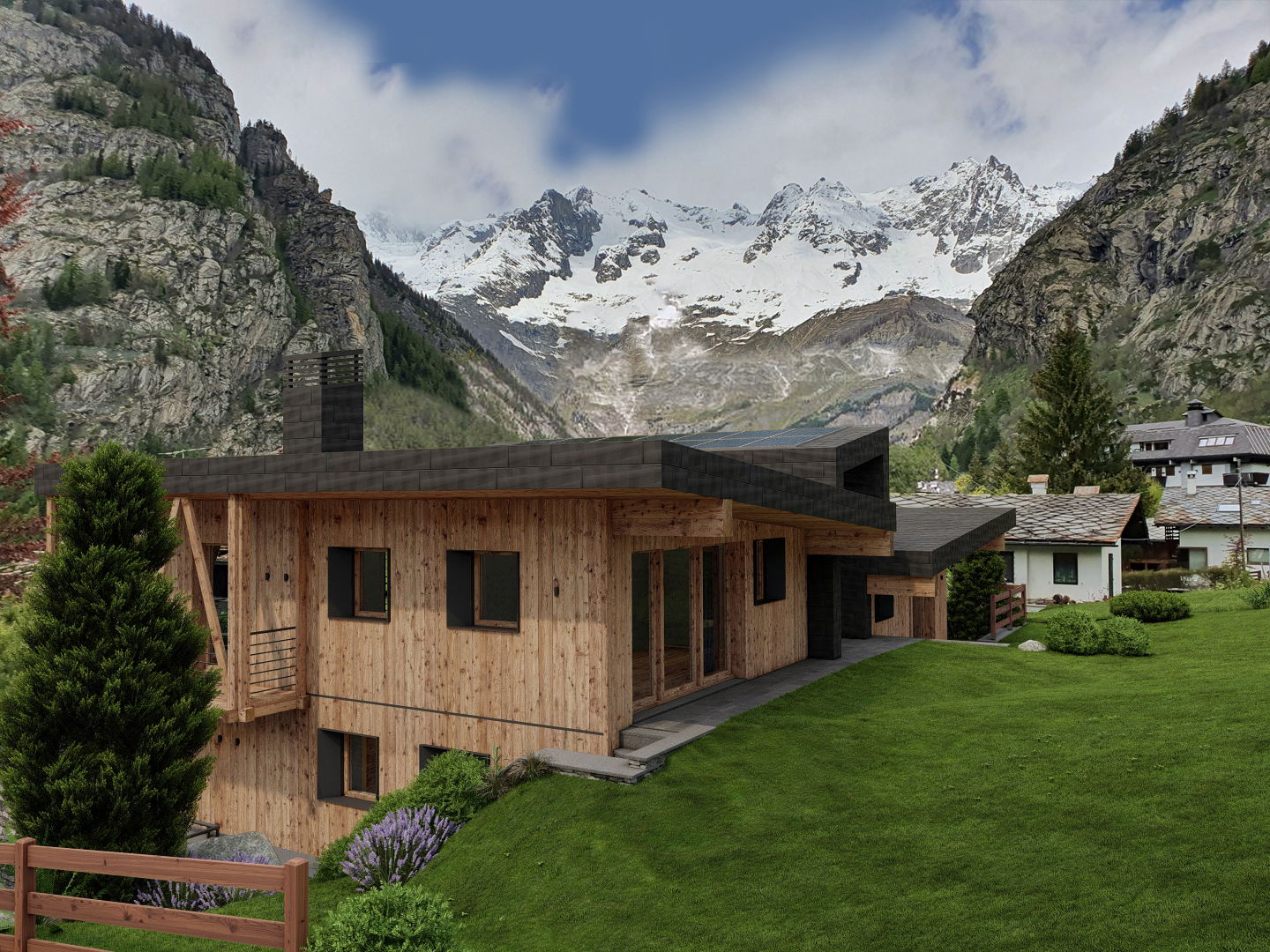
Fonte: React News, mercoledì 15 marzo 2023
Traditional winter destinations faced by the challenges of climate change are focusing on luxury and sustainability.
Since the first Winter Olympics in Chamonix in 1924 put a veil of glamour over skiing, the sport has enjoyed an enduring popularity, attracting winter sports enthusiasts as well as those attracted by the charms of the mountain resorts as much as the slopes themselves.
A century on, the Dolomites resort of Cortina d’Ampezzo is getting ready to host its second Winter Olympics in 2026, having staged its first in 1956, with snow sports now facing the growing and existential threat of climate change.
The European Alps are dotted with more than 600 stations, with over 26,000 km of ski slopes. Winter activities contribute more than €33bn of the European economy and €69bn globally, according to Laurent Vanat, author of an international report on ski and mountain tourism.
The Alps are by far the largest ski market on the planet, accounting for more than 40% of ski trips worldwide. However, the diminishing glaciers and receding snow line brought by climate change are threatening the booming Alpine industry, according to a joint study by the universities of Padova and Aarhaus.
Over the last 50 years, the Alps experienced a 5.6% reduction per decade in snow cover duration – an unprecedented decline over the past 600 years.
A five-star market
The threat is not paralysing the Alpine hoteliers’ business, though. In 2022 mountain resort transactions in Italy amounted to 7% of the total investment in hospitality, or €110m out of €1.6bn, said Domenico Basanisi, head of
investment properties hotels at CBRE Italy.
The majority were in Cortina, where in 2022 three hotels changed hands for a total of €80m. The main transaction was Invel Real Estate and Prodea Investments’s acquisition of the Hotel Bellevue Cortina d’Ampezzo for circa €49m, with a goal of turning it into a five-star luxury hotel with a €25m extensive refurbishment programme.
The number of hotels in Cortina had remained stable moving from 60 hotels in 2013 to 59 in 2019, but mostly due to the impact of Covid-19, the number decreased to 55 in 2021, according to data from Italian national institute of
statistics Istat. The total number of rooms was 4,730 in 2021, down from 4,986 in 2013.
In a sign of the appetite of both investors and clients for high-end offerings, fivestar hotels had an increase from three in 2013 to five in 2021 and from 650 rooms to 927 rooms. “The current pipeline is mostly focused on rebranding of current hotels rather than new developments or new supply,” CBRE’s Basanisi said.
The rise of mountain luxury…
In France, Savills’ research found that Courchevel’s residential asking price increased by 3% year on year, and Chamonix held constant at just under €30,000/sq m. French investor Hova Hospitality recently acquired the Club MMV Aime 2000 ski resort in La Plagne for €27m, its second Alpine purchase after the Club Med Grand Massif hotel in Samoëns, on behalf of Perial Asset Management for €125m.
“The consequences of global warming have caused a demand for high-altitude ski resorts which have access to glaciers,” said Dominique Ozanne, president of Hova Hospitality. “These resorts are going through a ‘premiumisation’ process, investing on ultra-modern installations and opening high-end hotels.”
“Resorts are going through a ‘premiumisation’ process, investing on ultra-modern installations and opening high-end hotels”
DOMINIQUE OZANNE, PRESIDENT OF HOVA HOSPITALITY
High-altitude ski resorts are heavily investing in their infrastructure. The Compagnie du Mont Blanc has announced a €447m investment in Chamonix
and the Mont Blanc area, while the 2026 Winter Olympics has brought a €1bn investment to Cortina. “These investments have resulted in an increase in the
price for the user. Premium resorts are targeting wealthy clients,” Ozanne pointed out.
Larger hotel brands are increasingly warming up to the charms of mountain luxury resorts. Savills’ ski report found that branded properties comprise half of the hotels opened in ski locations since 2015, and account for 85% of the future pipeline, demonstrating a trend towards larger hotel group brands. International brands such as the Four Seasons, Rosewood Group and Sixth Senses have all expanded into mountainous locations.
Residential premium
Mountain resorts are also seeing an increasing offer of residential properties combining luxury and a focus on energy efficiency. Across the 46 resorts tracked by Savills Ski Index, prime residential asking prices grew by more than 20% in the last year on average and more than 30% since 2020, more than double the average national house price growth over the same period for skiing nations.
According to the study, the resorts of Verbier, Val d’Isere, St Moritz, Gstaad, Courchevel, Zermatt and Andermatt had asking prices of above €20,000/sq m. By continually investing in their infrastructure and arranging summer activities and initiatives, these resorts have long enjoyed their positioning in the top 10 of the ultra-prime rankings.
In Courmayeur, an Italian Alpine resort at the foot of Mont Blanc and a favourite ski destination of the Milanese, average prices for houses have reached €7,670/sq m according to property portal Immobiliare.it. But for high-end offerings, prices can be as high as €9,000-€15,000/sq m, according to Alessandro Gilberti, founder and president of Milan-based developer Tenkai Real Estate.
Gilberti has family roots in Courmayeur, with his grandfather, Count Titta Gilberti, having owned both the first cable car on Mont Blanc and the historic Grand Hotel Royal. Now the opportunities are in luxury residential, he believes. “We are building two chalets according to the principles of geothermal energy and NZEB – Nearly Zero Energy Building, fully made of wood, which offers
better energy performances,” said Gilberti.

Milan-based developer Tenkai Real Estate is building chalets in Courmayeur according to the principles of geothermal energy
The chalets will be sold during the development phase and be ready by Christmas 2024.
The luxury mountain resorts are increasingly appealing outside the ski season. “I say that Courmayeur is my country house where I can also ski. It is just one
hour and a half from Milan, so it is easily reachable,” Gilberti said. “I believe we will keep having snow, but in any case here there is so much more. You can play tennis, hike, go to high level restaurants, and especially meet people. Most Milan is here during the winter season and more. It is now a relationship destination where skiing is no longer that central.”
Attracting users all year around
With climate change shortening the ski seasons, resorts have been developing summer activities as a way to retain customer loyalty across all four seasons.
“All the ski resorts, whether high-altitude or mid-altitude, are developing summer sport options such as kayaking, hiking, mountain biking… Interestingly, while in winter the high-altitude resorts are more in demand, the summer season brings clients to mid-altitude stations, where the surrounding nature is more apt for these activities,” Hova Hospitality’s Ozanne said.
According to Savills, the appeal of ski resorts is no longer limited to winter months, but rather generating demand throughout the year from buyers seeking “With the premiumisation of mountain resorts, there has been an underlying trend of wellness tourism in summer,” Ozanne added. “Clients seeking to practise summer sports in a more relaxed atmosphere than in the busy coastal
towns, or looking for a slow-paced vacation have created a new flux of tourism around mountain spa resorts.” However, he pointed out: “Mountain resorts still
make the most of their earnings in winter: revenues for the ski season are usually three times higher than for the summer period.”
Sustainability, the final frontier
The question of whether skiing can ever become a green activity is yet to be tackled. While there is not a unified plan in place for the whole Alpine region, hoteliers are taking action on the scope of their properties, with a focus on
refurbishing existing assets to bring them up to the industry ESG standards.
Part of the focus for refurbishment is the improvement of efficiency and a more sustainable offer. “Energy efficiency and sustainable renewals are crucial to obtain a competitive advantage, which is why we invest a lot of money in this area every year to implement new environmentally friendly standards,” said Markus Tauss, owner of Cresta Palace Celerina, in Engadina, Switzerland.
Opened in 1906, the hotel last year was refurbished with a focus on low energy consumption lighting and the cleaning with natural products, reducing the use of
chemicals.
However, ESG remains the next big topic to tackle by the wider mountain tourism industry, and resorts will have to take action to adapt to the new realities of shorter snow periods and more stringent laws that regulate energy
use. According to Ozanne, on the one hand, mid-altitude resorts that rely on artificial snow have realised that they won’t be able to sustain that model. On the other hand, high-altitude wellness hotels also have high energy
consumption: imagine how much energy it costs to heat an outdoor swimming pool in the winter.
Some resorts have already started implementing their action plans. According to National Geographic, Laax, in Switzerland, is working on a sustainability project called Greenstyle, with an aim to become the world’s first self-sufficient ski resort. Meanwhile, the mountain sustainability advocate group Mountain Riders has created its Flocon Vert sustainability label, which has been awarded
to 16 French ski resorts such as Val d’Isère, Chamonix and Megève.
Despite the rise in value in mountain properties, the whole sector is approaching its own Catch-22. As climate change brings shorter and more mellow winters and the skiing season continues to shrink, many resorts are
turning to the use of artificial snow and the energy-intensive luxury holiday industry, both of which are contributors to the rise of global temperatures. A
century after the Chamonix Winter games, the future of Alpine skiing is in a blizzard of uncertainty.
- by Amaya Urgoiti Basurto, Alessia Pirolo


